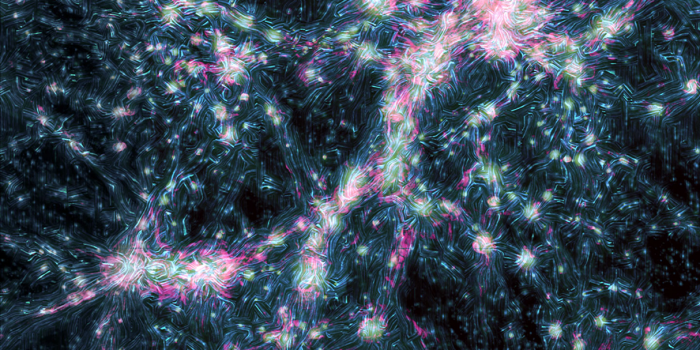Scientists at the International Centre for Radio Astronomy Research (ICRAR) in Australia have made a significant discovery that may shed light on the mysterious magnetic fields that exist on a cosmic scale.
In a recent study published in Science Advances, the team used a technique called stacking to identify shockwaves between groups of galaxies. These shockwaves, created when matter merges in the universe, are known to amplify magnetic fields, and their detection in the thinner areas of the cosmic web may provide clues as to how those fields contribute to the overall shape of the observable universe.

“Magnetic fields pervade the universe—from planets and stars to the largest spaces between galaxies. However, many aspects of cosmic magnetism are not yet fully understood, especially at the scales seen in the cosmic web,” said Tessa Vernstrom, a researcher at the University of Western Australia.
The cosmic web is the interweaving structure of filaments and clusters of gas, galaxies, and dark matter that make up the observable universe on a large scale.

The team’s study relied on the prediction that as gravity draws filaments together, it will create shockwaves that make magnetic fields stronger and produce a glow that can be detected with a radio telescope. Using stacking, which involves layering multiple observations to filter out background noise and enhance a faint signal, the researchers were able to identify evidence of these shockwaves for the first time.
But the combination of stacking with polarization, the process by which magnetic fields are forced into order, allowed the team to detect an excess of highly polarized light between clusters of galaxies. This light was interpreted as evidence of the shockwaves in the connecting filaments.

The discovery of shockwaves in the cosmic web provides new insights into the role of magnetic fields in the universe and may help scientists better understand how the universe grows. As Vernstrom notes, “Detecting and studying this glow could confirm our theories for how the large-scale structure of the universe has formed but help answer questions about cosmic magnetic fields and their significance.”


